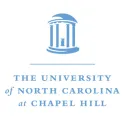UNC-Chapel Hill, the nation’s first public university, is a global higher education leader known for innovative teaching, research and public service.
Now in its third century, the University offers 78 bachelor’s, 112 master’s, 68 doctorate and seven professional degree programs through 14 schools and the College of Arts and Sciences. More than 29,000 undergraduate, graduate and professional students learn from a faculty of 3,600. Every day, faculty, staff and students shape their teaching, research and public service to meet North Carolina’s most pressing needs in all 100 counties. Carolina’s 292,500 alumni live in all 50 states and more than 150 countries
Visit the university website.
